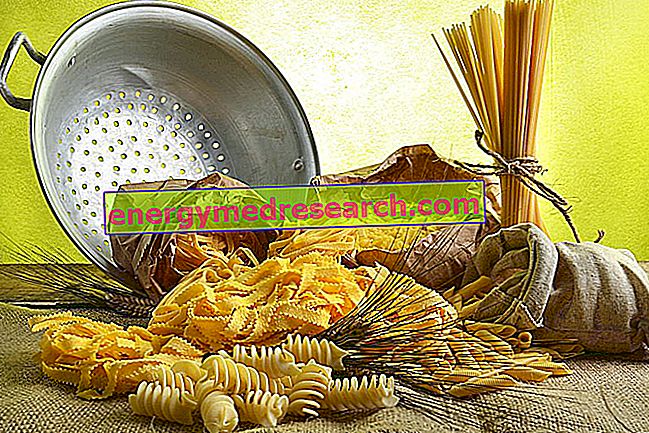What is the Murazzano?
Murazzano is a typical Italian cheese, of Piedmontese origin, which since December 16th 1996 has received the European DOP (Protected Designation of Origin) recognition.

Nutritional properties
Nutritional characteristics
With its 50-55% lipids (estimated on the dry substance), murazzano is a fat and very energetic cheese.
It is a product that is part of the II fundamental group of foods and as such is a good source of: high biological value proteins, vitamin B2 (riboflavin), calcium and phosphorus. However, murazzano also has chemical characteristics that are not really desirable, such as the abundance of calories, saturated fatty acids, cholesterol and sodium.
Energy is mainly supplied by lipids, followed by peptides and small amounts of carbohydrates.
As anticipated, the murazzano proteins contain all the essential amino acids in the right proportions, while the fatty acids are mainly saturated; carbohydrates are made up of lactose, which is milk sugar.
Fiber and gluten are absent, while the amount of cholesterol is excessively abundant.
Among vitamins, riboflavin (B2) abounds as anticipated, but also A (retinol equivalents) and hypothetically B12 (cobalamin, due to the bacterial action in the production phase) are appreciable.
We reiterate that the most significant minerals are calcium, phosphorus and sodium.
Dietary aspects
Murazzano is a cheese that does not lend itself to clinical nutrition, especially to the diet against overweight (due to excess of calories), hypercholesterolemia (due to the concentration of cholesterol and saturated fats) and sodium sensitive hypertension (for abundance of sodium from salt).
Instead it is a good support for the skeletal growth of young people and for maintaining bone density of mature adults (particularly women entering menopause and the elderly).
Murazzano is not suitable for the diet due to lactose intolerance, histamine and milk protein allergy. It has no contraindications in case of celiac disease, but it is not allowed by the vegan philosophy and not even by the vegetarian one, for the traditional use of animal rennet.
The intake of raw murazzano should be avoided in pregnancy, since the cheeses with flowered rind have a greater risk of contamination with Listeria monocytogenes, a microorganism whose infection would be harmful to the health of the fetus.
The average portion of murazzano is about 80g.
Description
Characteristics of the Murazzano
Murazzano is a Piedmontese robiola type cheese or toma.
It is produced with whole milk from Langhe sheep, possibly mixed with no more than 40% of cow's milk (a time allowed up to 60%). The pasta is raw, of initially soft consistency, which can age as it matures.
The maturation process is variable but always quite short. However, the dough remains quite tender and can show a mild look. The rind, of the washed type (process carried out with lukewarm water during the seasoning), is thin and more or less flowery, that is covered by a slight white mold which, as it matures, becomes first pale yellow and then light brown.
The shapes are cylindrical, with flat faces of 10-15 cm in diameter and 2-3 cm of heel. They weigh between 250-400 g.
To the taste, the murazzano is fat but delicate, dry, slightly herbaceous (typical of local sheep's milk) and ripe bitter scents as aging progresses.
Gastronomic use
Like all tome, the murazzano is an excellent table cheese, which lends itself to seasoning with extra virgin olive oil, salt and pepper, but also makes a lot of it during cooking.
First course recipes are famous: potato and murazzano timbale, Piedmontese truffle risotto, ravioli al murazzano and various pasta sautéed with melted cheese, and second courses: fassone fillet with murazzano cream, murazzano carpaccio and porcini mushrooms, stuffed onions with Murazzano etc. Excellent the spreadable cream of murazzano and chopped aromatic herbs.
From the Murazzano it is possible to obtain the bruss (Bruz di Murazzano), a food based on crushed cheese, spreadable, fermented with grappa or brandy and preserved in hermetic vessels called burnie.
Oenological pairing
Murazzano can be combined with local white wines such as Gavi and Roero Arneis; or blacks like: Dolcetto d'Alba, Dolcetto d'Ovada and Ruché di Castagnole Monferrato.
Production
Outline of Murazzano production
The promotion and safeguarding of the Murazzano are guaranteed by the "Consorzio di tutela del Murazzano DOP" which, in compliance with the regulations, monitors the quality level and ensures that the fundamental criteria are respected during production.
The production of Murazzano can be summarized as follows:
- Milk heating at 37 ° C
- Addition of liquid rennet and waiting for coagulation
- Break of the curd and arrangement in the forms with a perforated base for whey drainage
- 24-hour rest
- Salting
- Matured for at least 4-10 days and generally no more than 4 months.
The annual production amounts to about 800-1200 quintals.
Curiosity
A very curious legend is handed down on the goodness of the Murazzano.
"Received the task of the mother to watch over some cheese, Giovannino, a boy from the village of Murazzano, got distracted by letting a crow steal a shape. The young man chased the animal up to the Cebano, a place notoriously frequented by demons and witches. Exhausted, Giovannino took refuge inside a hut looking for refreshment. Inside, to his dismay, he saw a table laden with two covers and took advantage of it. At the end of the meal, the boy showed himself to be the devil who blamed him for theft and induced him to follow him to the underworld. As a last wish, the young man asked to be able to drink fresh water. When they reached a well, when Beelzebub lay down to see the presence of water, Giovannino pushed him inside. From the bottom of the well, Mephisto protested and cursed. At this point Giovannino, sensing the deception, promised to help him in exchange for money and the form that the evil one himself had taken from him in the form of a crow. Murazzano is so good that even the devil himself is tempted ”.



